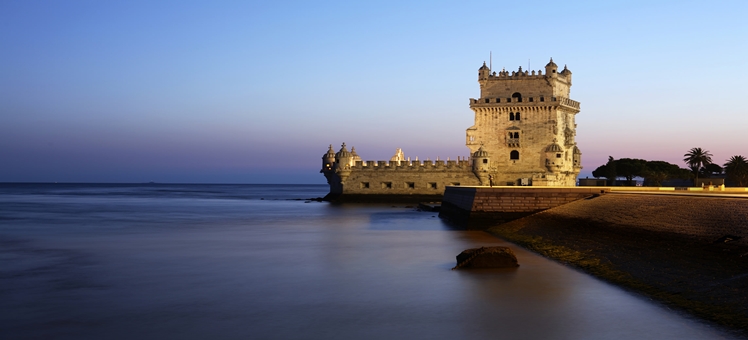
Home to some of the country’s most significant landmarks and attractions, Lisbon holds Portugal’s history in its ancient treasures that are scattered across the capital. With trams zigzagging across the metropolis, the main landmarks and attractions are all within easy reach, whilst fine examples of Portuguese architecture can be seen in and around the city.
A large number of attractions and landmarks were shaped following the 1755 Lisbon earthquake, with many of them becoming damaged or even completely destroyed. Since the earthquake, the majority of the main landmarks have been restructured or renovated, including the impressive Castle de São Jorge that sits upon one of the city’s seven tallest hills. The most notable landmarks to visit in Lisbon range in age and therefore, style, from 14th Century castles to 18th Century arenas.Castle de São Jorge
This iconic landmark of Lisbon was used for centuries as the main residence of Portuguese monarchs. Its 14th Century architecture can be appreciated whilst crossing an old stone bridge to get to the castle. A moat runs partially round it, and while the castles medieval treasures, architecture and historical significance play roles in making it one of the destinations to visit, the castle also provides breath-taking panoramic views over the oldest neighborhood in Lisbon, Alfama.
Torre de Belém
Standing indisputably as the city’s most iconic landmark, the Torre de Belém, situated in the port of Lisbon, was once used in the 16th Century to control the entrance to the city from the sea into the Tagus River. This watchtower is a symbol of an Age of Discovery and is a UNESCO World Heritage monument. The Padrão dos Descobrimentos monument also sits along the Tagus River to celebrate the Age of Discovery in Portugal and the ships that departed the city to explore India and Orient.
Praça de Touros do Campo Pequeno
Bullfighting still remains traditional within Portugal, however the arena within Lisbon offers more to it than the ‘sport’ itself. Built within the 1890s, the stadium stands as a massive octagonal building adorned with mint green domes. After a recent renovation, the arena now offers more than bullfighting and fascinating Portuguese architecture, with multiple other events running frequently within the stadium. A shopping centre has also been fitted beneath the structures of the arena, making it worth a visit for numerous reasons.
Igreja de São Roque
Built in the 16th Century by the Jesuits, the São Roque church in Lisbon is the holder of the world’s most expensive chapel. It is one of the oldest Jesuit churches in the world and was built over a 23-year period. From the outside, the exterior of the church is deceivingly plain, whilst the inside is richly decorated with an abundance of detailed large paintings, sculptures, marble and finely detailed woodwork. The church holds eight separate lavishly decorated chapels as well as a small museum exhibiting 16th and 17th century religious objects.
Parque das Nacoes
Situated along the riverfront, the Parque das Nacoes exhibits striking contemporary and futuristic architecture, providing a contrast to Lisbon’s old quarters and rustic cobbled streets. The theme for the area was ‘The Oceans: A Heritage for the Future’ for Lisbon’s World Fair in 1998, when the area was redeveloped. Cable cars and trains run through the parks to offer visitors sightings of the full length of the attraction, which includes water gardens and a viewing tower.